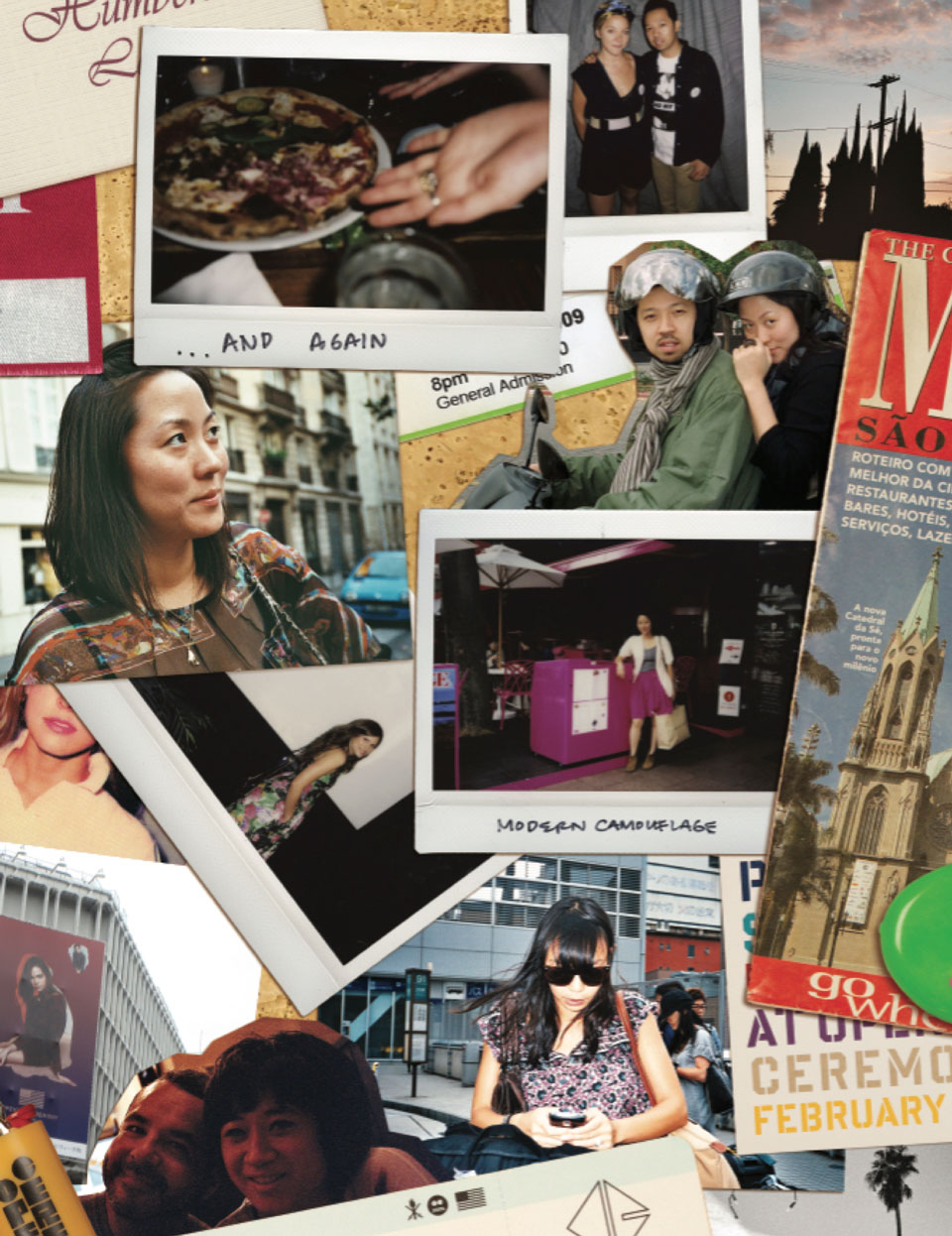
from Fashion Together by Lou Stoppard (Rizzoli)
Two heads are better than one. It takes two to tango. Or, as Lyn Collins crooned, “It takes two to make a thing go right, it takes two to make it outta sight.”
Not that this is a newsflash to anyone who works in fashion, as Lou Stoppard points out in Fashion Together: Fashion’s Most Extraordinary Duos on the Art of Collaboration (Rizzoli). The industry is rife with partnerships in which, as curator Andrew Bolton notes in the foreward, “1 + 1 = 3.” Where would Valentino Garavani be without Giancarlo Giammetti? Or Ossie Clark without Celia Birtwell? Yves Saint Laurent without Pierre Bergé?
“The fantasy of the designer in an ivory tower, dreaming up wonderful ideas in isolation, has never been accurate,” writes Stoppard, who spotlights 18 contemporary duos who “have bucked trends and caused the industry to evolve.” The types of relationships he explores are myriad, whether designer-model (Riccardo Tisci and Mariacarla Boscono) or stylist-milliner (Isabella Blow and Philip Treacy). Does he uncover a secret formula to the perfect collaboration? No, but you’ll find his interviews deeply captivating and revelatory. “Like happy romantic unions, successful creative partnerships rely on a certain amount of chemistry,” Stoppard continues. “The relationship works or it doesn’t. And when it does work, it is a joy, pure and simple.”
Here, some inspiring words from Fashion Together.
Designer Jonathan Anderson & Stylist Benjamin Bruno
JA: I think there is a dialogue that needs to be built up. If you’re having a conversation with yourself, it becomes loaded with your own baggage. You cannot reject things. The editing process is very difficult. Successful brands are about more than one person. J.W. Anderson became a brand because it was about more than a designer.
BB: It’s a world now.
JA: It’s a world now. I know what I’m good at. I can sell a story. I’m very good at marketing something. Ben can feel a trend. I can feel when there’s a lull in press. I can feel when we’re not getting enough traction for something. At the end of the day, it’s actually quite simple—it is about trying to get a flock of birds to go in one direction.
BB: And create a universal desire for something.
Designers Carol Lim & Humberto Leon
CL: Because we’re involved with so much, we had to split tasks and do things separately. We’re divided, but we always start the day together, so we can be looped into each other’s thought processes. Because we already know each other and how we work, I can guess all the questions he would ask. Because we started out doing everything together, I was able to absorb a lot of Humberto’s thinking and he’s absorbed a lot of the way that I think. So in some strange way we can each stand in for the other person.
Stylists Inez van Lamsweerde & Vinoodh Matadin
VM: When I look at the work, it’s our work — our handwriting.
IVL: We are so connected that it doesn’t really seem to be possible to see it another way.
VM: It’s like making a dinner together. And we need either other. Our industry has changed so much. It’s much faster now. Nobody can do this tempo alone. You need a team around you to really succeed. There is no fashion designer in the world who can make six different collections in a year, plus six different shows, all by themselves. It’s the same for us. Nowadays we have to shoot the campaign, the video, the behind-thescenes video. In the same eight hours, we used to do three pictures. We didn’t plan for it when we started, but we’re so lucky that we are two, because otherwise it would be basically impossible.
Designer Marc Jacobs & Stylist Katie Grand
MJ: I’m really at my most effective or useful when I’m on my own, but I don’t like being on my own! I always think the best things come from a dialogue when you throw things back and forth. So, when I’m working with other people, I feel there’s a kind of real integrity to the work and a fluidity. If I just had to sit in a room by myself and come up with things, they’d be pretty static. It wouldn’t have the same life and the energy. I don’t mean to put myself down, because obviously I do a lot more than participate, but everyone I work with contributes something special, and I know that without their contributions the results wouldn’t be the same.
KG: Marc likes to react against or with things. That starts him thinking. Marc’s not done a single interview where he says, “I.” It’s always “we.” It’s really nice that he does push people out like he does. He’s happy for his staff to be photographed for magazines or profiled.
MJ: It’s all of us. When I say “me” I always mean “we” — that group of people that are involved in getting from a blank piece of paper to an idea to a presentation to a product. The clothes, the fashion, the sense of spirit, the music, the light — it just is a collaboration. There’s no other way to describe it.
